| 1 | European worm snake |
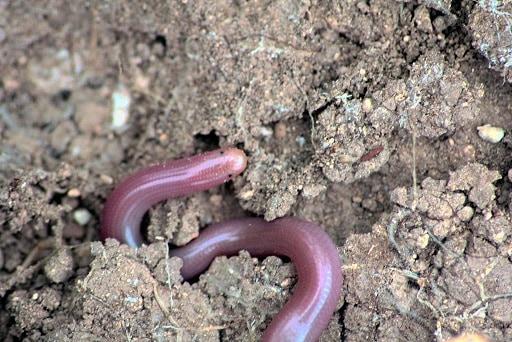
At 18-30cm (max 36.5cm), the European worm snake (Xerotyphlops vermicularis) eats small insects and worms, yet ants seem to be their particular favourite. This species is found in southeast Europe, particularly in grassy hillsides and rocky plains. They’re no threat to human beings, even if you tempt one to bite your finger. For ants, it’s another story. The scent apparatus of Xerotyphlops vermicularis snakes is focussed strongly towards ants, and to acquire them they simply open their mouths and swallow.
This is a species of Greece and Bulgaria, and is quite common, but not encountered often, because of lurking in underground tunnel galleries. It’s a mystery as to what came first – whether they converted to ants because of their underground habitat, or whether their love of ants dragged them into subterranean worlds.
European worm snakes can disappear underground for 6 months of the year, and are virtually impossible to find. The best bet is after heavy rains in summer, when they sometimes appear under stones on the surface. Though not heavily researched overall, this blind snake has a great advantage for scientists – their bodies are so transparent that you can see prey still in their belly, as well as their internal organs.
| 2 | Texas blind snake |
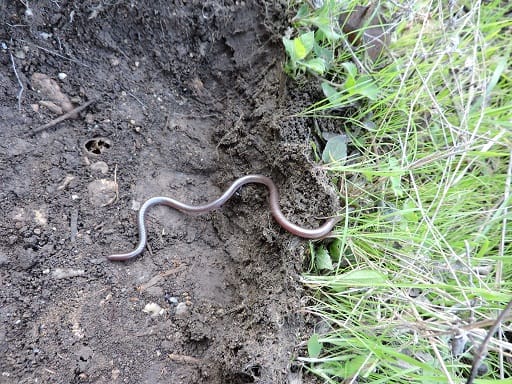
The Texas blind snake is one of the best researched ant-eating snakes worldwide. Rena dulcis lives in the southern US, and has a brown body with no noticeable patterns. Its eyes are small and dark, and their scales are sleek and smooth.
Texas blind snakes live in a world incredibly far removed from our own, a world of tiny soil tunnels and towering anthills. They’re encountered fairly common in the southern US, and it has been known since the 1960s that they feast on ants. Scientists have found that ants are repelled by Rena dulcis scents, and that when attacked by the swarm, the Texas blind snake will produce a foul-smelling liquid, writhe around, and smear it everywhere so that the ants are deterred. Studies have found that ants and termites make up 54-64% of their diet, particularly the soft younglings.
However, there’s still lots to learn. We don’t know whether they have a favourite type of ant (probably not fire ants). We don’t know their hunting methods, as it’s even possible that they follow the trail of ants across the forest floor, back to their citadel, the anthill. Or maybe they head to anthills immediately, as this would have the highest concentration of scent particles.
| 3 | Ringneck snake |
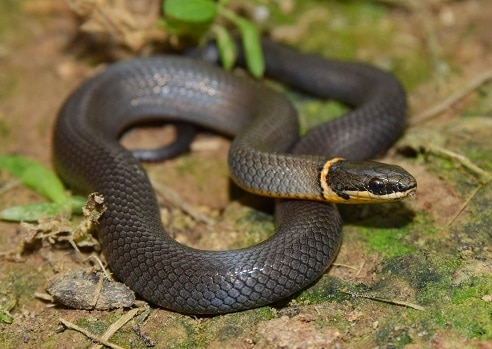
Ringneck snakes not only eat ants, but have the audacity to slither right into anthills and start feasting. This is an American species recognisable by its namesake ring, which is itself eaten by copperheads and hawks. They live in rich forests and grassy hillsides, and average at just 30cm, meaning that they must veer small for their prey. One day, they might unluckily find an empty anthill, like an old abandoned base. But with excellent tongue flecking for scents, they will inevitably find a rich ant vein sooner rather than later.
Ringneck snakes even live in anthills sometimes, resting snugly in the base. Sometimes, the ants continue to construct and build on top of them. Anthills are a great place to hide, with free food and effective shelter against larger predators like kingsnakes. Ringneck snakes swallow their ant prey whole, and possess the nimble movements necessary to grab them as they crawl around.
As a 30cm dweller of mossy forests, ringneck snakes are infinitely more equipped to hunt ants than falcons or bears. They’re also more equipped than eastern racers or coachwhips, which are are far too fast and impatient.
| 4 | Reticulated worm snake |
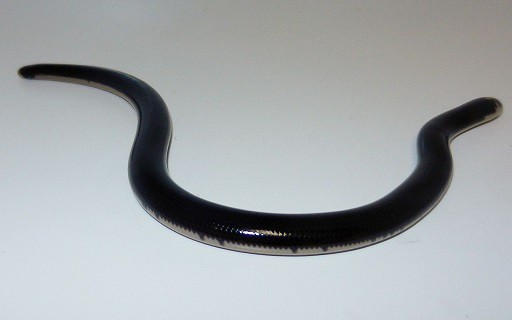
The reticulated worm snake (Amerotyphlops reticulatus) only measures 50cm, yet to ants there is nothing more terrifying in the world. This species is another semi-blind snake, with tiny eyes, and lives in northern South America: Venezuela, Guiana, and Colombia. They’re distinguished by a snowy white head and belly, against a largely black body. That said, reticulated worm snakes never see their reflection, and probably have no idea how they look. They’re only concerned with one thing: getting their next ant fix.
Ants are easily the reticulated worm snake’s main prey, with one favourite being the bullet ant (Paraponera clavata). Exactly how they locate ants is a mystery, but they spend their whole life on the forest floor. Amerotyphlops reticulatus hasn’t necessarily won the war the moment it finds an anthill. It will inevitably swallow a handful, but reticulated worm snakes are so slow that the ant swarm might even outrun them. Additionally, reticulated worm snakes can’t start swallowing indiscriminately, as they don’t won’t to eat chunks of anthill as well. They require accuracy if they want a truly satisfying ant meal.
Reticulated worm snakes are never seen zooming around the forest. They’re a harmless, humble species which sticks to a small home range.
| 5 | Freiberg’s blind snake |
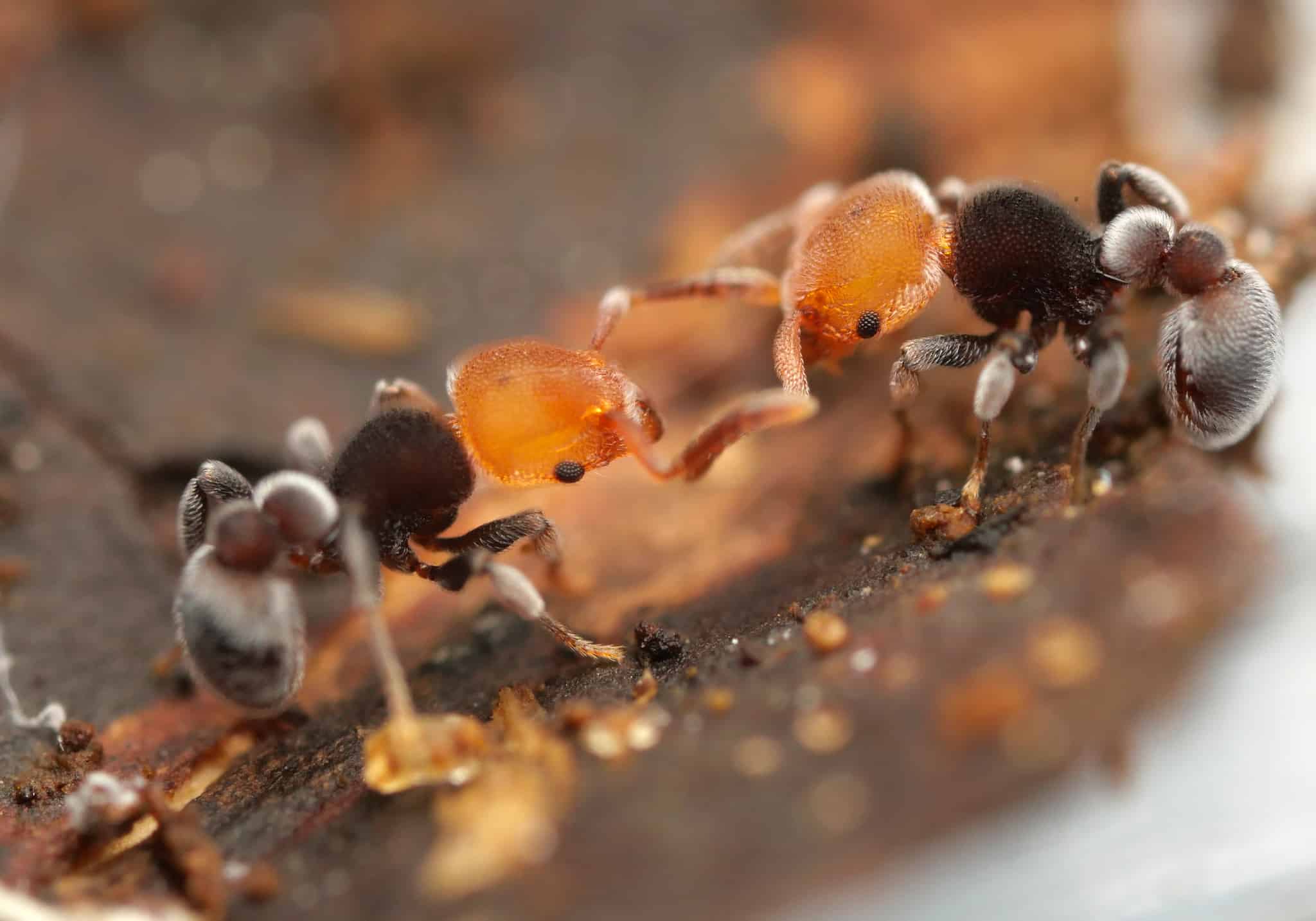
It’s a normal day in the anthill. Hundreds of ants are assembling their captured leaves and twigs, constructing a new anthill greater than any they’ve built before. Suddenly, the walls shift, light blares in, and an enormous, greedy serpent face is staring at them. This brutal scenario happens regularly in the northern reaches of Argentina. Freiberg’s blind snake is one of the most exclusively ant-eating snakes around, as they made up 100% of their diet according to a 2020 study. This is a species of grassland, which lives underground and is often found sheltering under rocks.
This snake has a simple life, revolving around hoovering up ants, finding mates and sleeping. This is a story of one 30cm antagonist versus 500 1cm protagonists. Sometimes, the Freiberg’s snake wins, swallowing many mouthfuls of ants and lying peacefully for 3 weeks digesting. Sometimes, the ants win, with a base so well designed that Epictia australis can get its head stuck, and have to back off in disgrace.
That’s not the only danger; Freiberg’s blind snake could also be picked up by a burrowing owl moments before it reaches the anthill. The possibilities for doom are endless in the Argentinian plains, although when hunting ants below the surface, they’re far safer.
| 6 | Amaral’s blind snake |
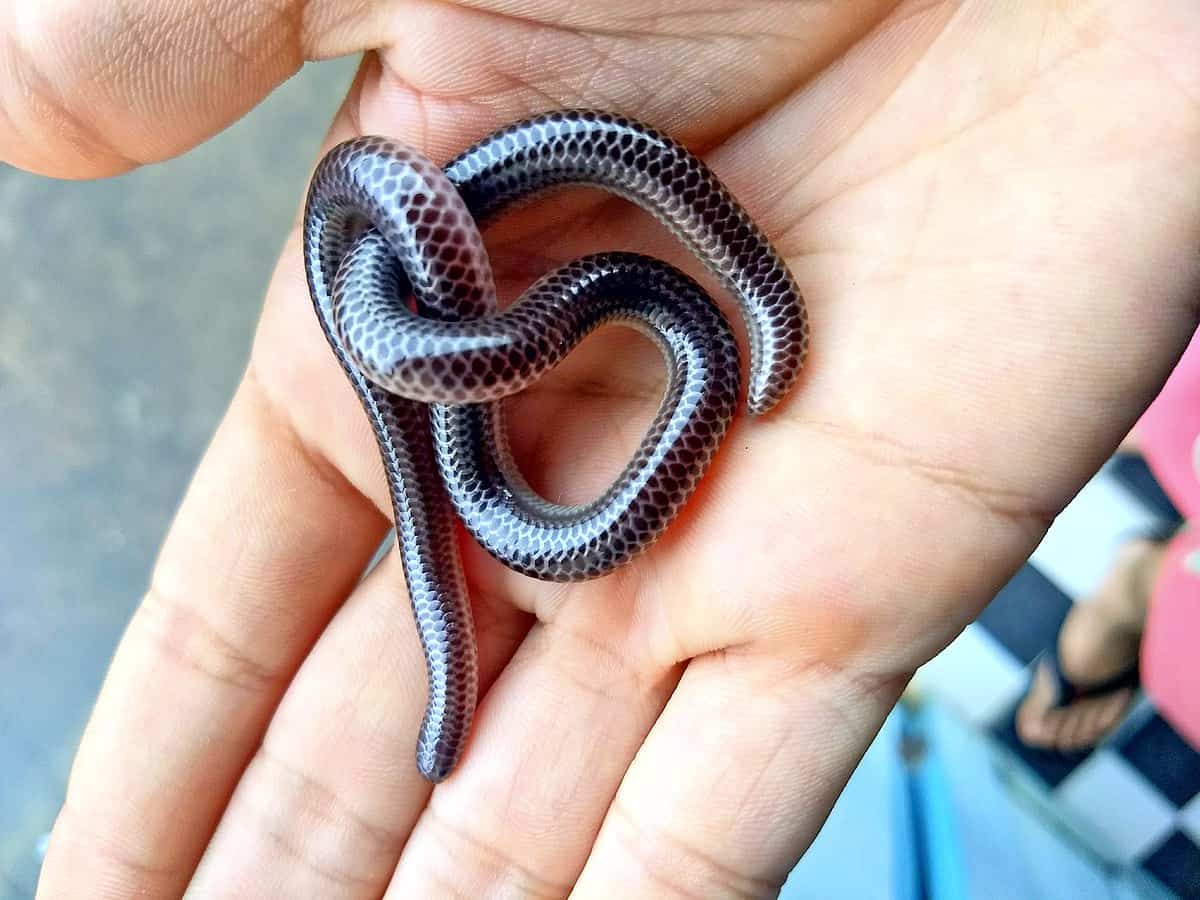
This snake doesn’t know the taste of mice, and has never experienced the scaly flavours of a lizard. Instead, it’s an insect-eater through and through, and ants are one meal on its menu. Amaral’s blind snakes live in southern Brazil, including Goiás, Bahia, and Mato Grosso states. They’re most common in cerrado, sweeping grassland interspersed with tree clumps, which have plentiful opportunities for ants to construct their bases.
Trilepida koppesi are non-venomous, but may spike a human’s hand with their tail if picked up. Ants probably look the size of a small rabbit to an Amaral’s blind snake, and when they find one, they will follow stealthily, until they find its home base. This species is black with small eyes and a white webbing pattern, and shiny reflective scales. They’re so distracted by ants that they usually don’t notice humans.
Amaral’s blind snakes spend much of their time underground, mostly in the upper 30cm of soft soil. After carefully analysing scents, they might find one ant, and then another. This stream gradually thickens, until suddenly, they’ve found a hidden underground ant base. There’s problems as well – a twisting tree root could easily block their path at the last minute, or an awkwardly placed rock. The ants could also have a surface tunnel at the back, which they use to escape.
| 7 | Blackish blind snake |
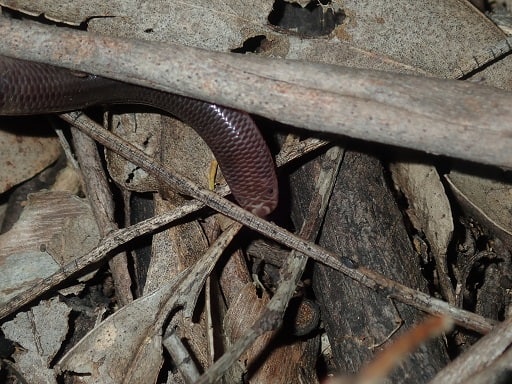
A blind snake found in southeast Australia, including civilised areas, which poses no threat to humanity. The blackish blind snake never sees branches or the treetops in its entire life, and nor does it want to. This would distract it from its mission: eating ants.
Blackish blind snakes are one of the best researched ant-eating snakes. Their style is known, as they first sniff out individual ants using their advanced scent apparatus. Once they arrive, they swallow huge amounts of ants using a special raking manoeuvre, which is probably the best way to eat ants if you ever felt like it. Their snout is slender, and weaves through narrow tunnels with ease, uncovering hidden ant chambers, which immediately rouse to action when they see a snake staring at them.
Blackish blind snakes (Anilios nigrescens) are mainly found in soft soils, even though ants often crawl out of cracks in dry soil. If a cobra tried this ant-eating lifestyle, then it would be constantly cursing and shaking dirt off its face. The cobra would remember its trusty venom and lunge, only to snap down on thin air, as the nimble ants dodge with ease. It would then stab at the ground so fast that it would miss all but a couple of ants. Finally, the cobra would give up and go back to its usual rat prey. Hunting ants isn’t for any snake, no matter how powerful; it requires a particular set of skills.
| 8 | Ternetz’s blind snake |
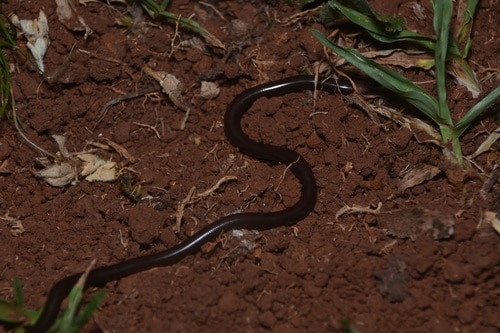
Another humble blind snake. In the grasslands of southern Brazil, Ternetz’s blind snake (Liotyphlops ternetzii) is feared by the local ants, much more so than human beings. This snake measures 30-40cm and has no venom whatsoever. Their lot in life is moving slowly through tunnels just below the surface of grassland, trying hard to pick up ant trails, but they know nothing else, and are therefore perfectly happy.
Ternetz’s blind snakes have a pointy tail, and a lighter face contrasting sharply against a black body. They inhabit southern Brazil, Argentina and Paraguay, and are most often sighted by humans after heavy rains. Ants and termites form the majority of their diet.
50 million years ago, the Ternetz’s blind snake’s ancestor was probably a lizard eater just like its Brazilian neighbours. This ancestor was starting to die out, as other snakes were evolving funky new skills and acrobatics which it couldn’t dream of competing with. Then one day, it ate an ant, and a whole new world opened up. It had found a food source that no other snake was exploiting, and at that moment its path was written, and its survival was assured.
| 9 | Smooth green snake |
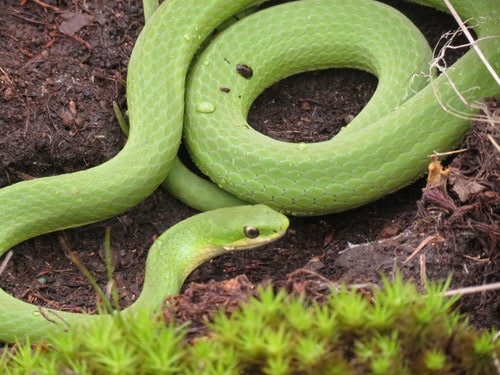
Being 30-40cm instantly means that snakes have to eat tiny creatures. The sharp-tailed snake mainly eats slugs, while lined snakes are addicted to earthworms. Smooth green snakes are a rare American species to throw in ants as well, invading anthills and eating the occupants while they try hastily to organise and fight back. Though not a vast proportion, a study found that 10% of their diet was ants, with 37% being caterpillars.
Smooth green snakes are a very rich green, with no ability to hurt a human being. Their camouflage is exceptional, and they can be invisible while hiding between blades of grass. If ants are nearby, then it’s highly like that the smooth green snake will find them. This snake probably looks as large as a killer whale to an individual ant.
The leafcutter ant has the most disproportionate strength of any animal on Earth, easily beating a silverback gorilla. It’s capable of lifting leaves and twigs the size of pianos. Would a 40cm smooth green snake be too much? For one ant, yes, but if they teamed up the story would change. At the moment, this is probably beyond their reach, but their teamwork skills are legendary. After humans and chimps, ants are a rare group known to organise and wage war on each other. It’s conceivable that as smooth green snakes and ants evolve in tandem, constantly pressurising each other, ants might learn how to pick the hungry serpent up, and carry it faraway from the anthill, perhaps dumping it in an open spot where it’s more likely to be eaten by birds. Right now, this is just a theory.
| 10 | Redbelly earth runner |
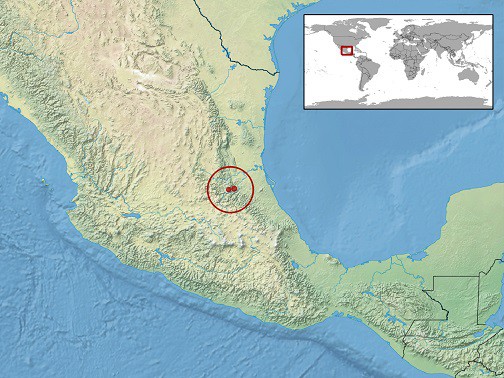
The redbelly earth runner is the opposite of the African rock python. The latter slithers through savannahs and eats hyenas, while the redbelly earth runner (Chersodromus rubriventris) hides in forests and eats ants. An anthill is this 30cm snake’s favourite sight on Earth, as they slither over and start greedily eating the inhabitants.
This species lives in the Hidalgo region of southern Mexico, hiding in montane forests such as pine-oak and cloud forests. They’re simply too small to eat rats or mice, and so they must stick to insects, although to their taste buds, they probably taste amazing. A study on Chersodromus rubriventris found that beetles and adult ants formed the majority of their diet.
Redbelly earth runners are a red species, with a recognisable white neck collar, and are extremely rare. Until the 1980s, only 3 had ever been discovered, and they live a subterranean lifestyle, coming above ground at night. It’s believed that this Mexican snake is at strong risk of going extinct, and the local ants would probably breathe a sigh of relief.
